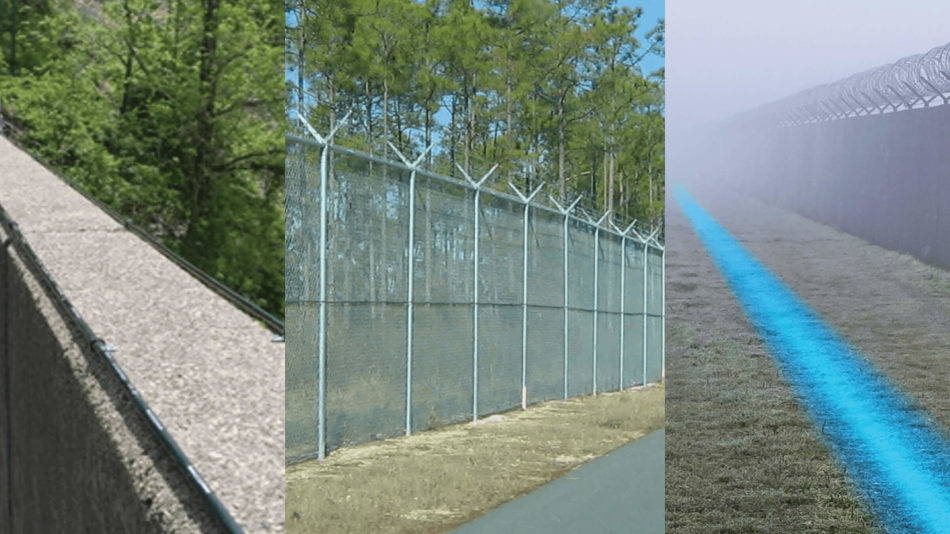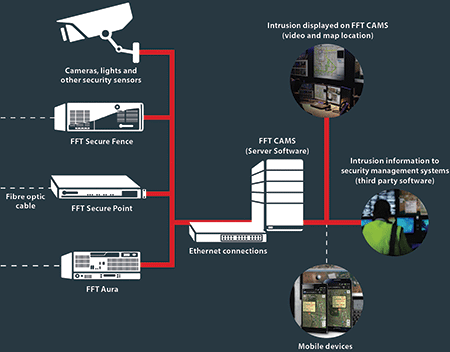Improve Your Safety And Security With Advanced Fiber Optic Safety And Security Solutions
In a period where safety and security is extremely important, sophisticated fiber optic protection systems present a compelling remedy for improving safety across different environments. What ramifications do these advancements hold for future safety measures?
Benefits of Fiber Optic Safety And Security
Using the advantages of fiber optic innovation dramatically enhances safety and security systems across different applications. One of the primary benefits is the boosted data transfer ability, allowing for the transmission of big amounts of data at high rates. This is particularly crucial for real-time video surveillance, where high-resolution feeds can be sent without latency, guaranteeing instant reaction capabilities.
Furthermore, optical fiber exhibit premium resistance to electro-magnetic interference, which is important in settings with possible signal disruptions. This reliability guarantees constant efficiency in important protection procedures. Moreover, fiber optic cable televisions are less susceptible to tapping and unauthorized accessibility contrasted to conventional copper electrical wiring, thus boosting information honesty and privacy.
An additional noteworthy benefit is the durability of fiber optic systems; they are extra resistant to ecological elements such as moisture, temperature level fluctuations, and harsh substances. This strength equates to lower upkeep costs and longer life-spans for safety installations.
Last but not least, the light-weight nature of fiber optic cable televisions promotes much easier installation and transmitting, especially in intricate facilities (fiber optic security system). Ultimately, the combination of fiber optic technology right into protection systems not only strengthens protection actions but likewise enhances functional efficiency
Trick Attributes to Think About
When reviewing fiber optic safety systems, a number of key functions need to be considered to make sure optimum efficiency and effectiveness. Initially, analyze the system's detection variety and level of sensitivity; a comprehensive variety enables keeping an eye on huge locations, while high sensitivity guarantees that also small disruptions are spotted immediately.
Following, think about the assimilation capabilities of the system. A fiber optic security system should perfectly interface with existing protection procedures such as cams and alarm systems, producing a cohesive safety and security network.
Durability and ecological resistance are additionally important features. Make sure that the system is created to stand up to harsh weather and potential physical risks, as this will certainly prolong its functional life-span.

Last but not least, check into the scalability of the system. A durable fiber optic safety system must be easily expandable to accommodate future demands without substantial overhauls. By carefully taking into consideration these functions, you can select a fiber optic safety solution that boosts safety and safety and security in your environment.
Setup Process Introduction
To successfully apply a fiber optic safety and security system, an organized installation procedure is crucial. This process starts with an extensive site evaluation to determine the certain protection needs and to determine optimum locations for fiber optic cable televisions and protection devices. Following this evaluation, the installment group will develop an in-depth strategy, including wire pathways, required tools, site web and conformity with local regulations.
Next, the installation includes laying the fiber optic cable televisions, guaranteeing they are secured from environmental aspects and physical damage. Correct handling techniques are essential, as fiber optic wires are delicate and can be conveniently harmed. After the cabling is installed, adapters and discontinuations are diligently completed to ensure signal integrity.
The subsequent phase is composed of mounting safety and security devices such as cameras, activity detectors, and security system, all incorporated with the fiber optic network. Rigorous testing is performed to confirm that all elements are operating appropriately and to make sure optimum performance.

Comparing Fiber Optic to Traditional Equipments
The development of protection innovation has led to considerable advancements in the contrast between fiber optic systems and conventional copper-based systems. Fiber optic systems utilize light to send information, offering premium browse around this web-site data transfer and speed contrasted to their copper equivalents. This results in improved information transmission capacities, making fiber optics ideal for high-resolution video surveillance and real-time surveillance.
Additionally, fiber optic wires are resistant to electromagnetic disturbance, lowering the possibility of signal deterioration brought on by outside variables. This particular guarantees regular efficiency, even in tough atmospheres. In comparison, standard copper systems are much more prone to interference, causing potential susceptabilities in security applications.
Longevity is one more advantage of fiber optic systems. They are much less prone to harm from environmental elements such as wetness and temperature level variations, which can compromise copper wiring. Fiber optics are lighter and thinner, enabling for simpler installation and decreased physical impact.
Nonetheless, typical systems often tend to have lower initial costs, making them attractive for budget-conscious projects. While fiber optic systems may call for a higher upfront financial investment, browse this site their lasting advantages-- such as lower upkeep expenses and better dependability-- usually surpass the preliminary expense, placing them as a remarkable option for contemporary security demands.
Future Fads in Security Modern Technology
Emerging trends in protection innovation are poised to transform the landscape of security and danger detection - fiber optic security system. As companies increasingly deal with sophisticated dangers, innovations such as synthetic knowledge (AI) and device learning (ML) are ending up being integral to protection systems. These technologies improve the capability of fiber optic systems by allowing real-time information evaluation, recognizing abnormalities, and automating feedbacks to potential breaches
Furthermore, the combination of the Net of Things (IoT) is reinventing security frameworks. IoT devices can give comprehensive situational awareness and facilitate smooth communication between various security parts. This interconnectedness permits extra reliable tracking and faster occurrence action times.
Biometric authentication is also acquiring energy, giving a greater level of safety and security through one-of-a-kind physical characteristics. As this technology advances, it is most likely to be incorporated right into fiber optic systems for improved accessibility control.
Final Thought
In final thought, progressed fiber optic protection systems stand for a significant development in safety and monitoring technology. The shift from conventional systems to fiber optic services shows an expanding pattern in the direction of a lot more effective and reliable security steps in an increasingly complex technical landscape.